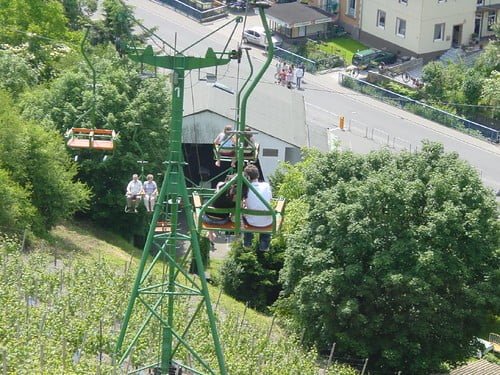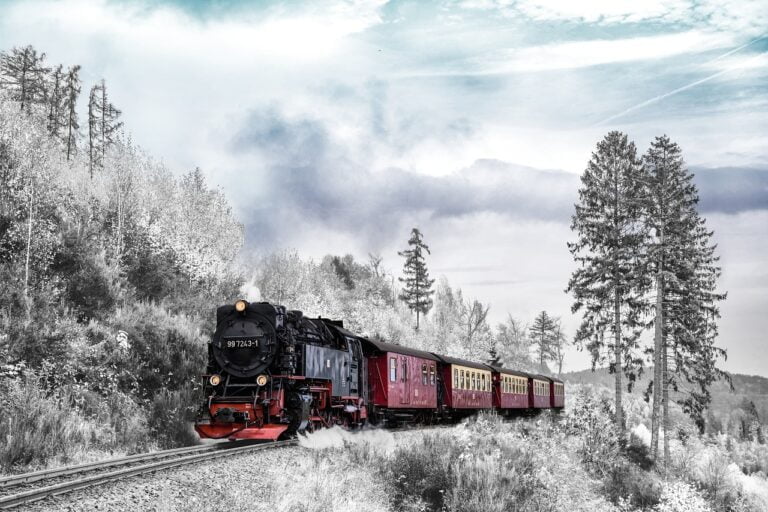Is Mt Hood in the Ring of Fire?
Mt. Hood, a prominent volcanic peak in the Cascade Range of Oregon, resides squarely within the Pacific Ring of Fire, a 40,000-kilometer horseshoe-shaped zone of intense seismic and volcanic activity that encircles the Pacific Ocean. As part of the Cascadia subduction zone, Mt. Hood's growth was fueled by mantle magma, which interacted with groundwater to produce a unique blend of lava flows, pyroclastic deposits, and glacial carvings. Today, it stands as a legacy to the region's dynamic geological heritage, with its proximity to Portland making it a significant threat to the region's population – and there's still more to uncover about this volcanic giant.
Mt. Hood's Geologic History
Located in the Cascade Range of Oregon, Mt. Hood's towering presence is a monument to millions of years of geological upheaval, shaped by a complex interplay of tectonic forces and volcanic activity. The mountain's foundation is rooted in the Jurassic era, with the accretion of oceanic crust and volcanic arcs. Over time, subduction and plate convergence led to the formation of the Cascade Range, with Mt. Hood emerging as a prominent volcanic peak. The volcano's growth was fueled by mantle magma, which interacted with groundwater to produce a unique blend of lava flows, pyroclastic deposits, and glacial carvings. Today, Mt. Hood stands as a legacy to the region's dynamic geological heritage, its snow-capped peak a symbol of adventure and exploration.
The Ring of Fire Explained
The Ring of Fire, a 40,000-kilometer horseshoe-shaped zone of intense seismic and volcanic activity, stretches from New Zealand to the Andes Mountains, engulfing the Pacific Ocean boundary. This dynamic region is characterized by the formation of volcanic arcs, where tectonic plates converge and magma rises to the surface, creating a chain of volcanoes. Understanding the Ring of Fire's mechanisms is vital to grasping the geological forces that shape our planet and, specifically, the volcanic landscape of Mt. Hood.
Pacific Ocean Boundary
How does a 40,000-kilometer-long chain of volcanoes and fault lines, stretching from New Zealand to the Andes, come to define the Pacific Ocean's perimeter, earning its ominous nickname, the Ring of Fire? This boundary is a result of the Pacific Ocean's unique tectonic setting. The Pacific Plate is being subducted, or pushed, beneath neighboring plates, creating a zone of intense volcanic and seismic activity. As the Pacific Plate sinks, it encounters increasing heat and pressure, causing the Earth's crust to melt and produce magma. This process has shaped the Pacific Ocean's perimeter, resulting in a chain of volcanoes, fault lines, and mountain ranges that form the Ring of Fire. This dynamic boundary has been instrumental in shaping the region's geology and continues to influence the landscape today.
Volcanic Arc Formation
Forty percent of the world's active volcanoes cluster along the Ring of Fire, a demonstration to the Pacific Plate's relentless descent into the Earth's mantle, where it encounters scorching temperatures and crushing pressures that forge a chain of volcanic arcs. As the Pacific Plate sinks, it encounters increasing heat and pressure, causing the rocks to melt and rise as magma. This process creates a chain of volcanoes, known as a volcanic arc, as the overriding plate is subjected to increasing volcanic activity. The resulting volcanic arcs are characterized by a sequence of volcanoes, each with its unique geochemical signature, reflecting the varying depths and temperatures of the melting process.
Tectonic Plate Movement
Sliding relentlessly beneath the surrounding plates, the Pacific Plate fuels the Ring of Fire's intense volcanic activity. As the denser Pacific Plate sinks into the Earth's mantle, it encounters increasing heat and pressure, causing it to melt and produce magma. This process is known as subduction, and it's the primary driver of volcanic activity along the Ring of Fire. The Pacific Plate's movement also triggers earthquakes as it scrapes against the surrounding plates, releasing immense energy. The resulting volcanic arcs, like the one that formed Mt. Hood, are a monument to the Pacific Plate's relentless movement. This dynamic process has shaped the Earth's surface over millions of years, creating the Ring of Fire's unique landscape of volcanoes and fault lines.
Oregon's Volcanic Landscape
Oregon's unique geology is characterized by a diverse array of volcanic features, shaped by millions of years of tectonic activity that has sculpted the state's rugged landscape. The state is home to numerous volcanoes, including stratovolcanoes, shield volcanoes, and cinder cones. These volcanic formations are a evidence of the region's turbulent geological past, where magma has risen to the surface, erupting in fiery displays of molten rock. Today, Oregon's volcanic landscape is dotted with scenic wonders, from the towering peaks of the Cascades to the rolling hills of the high desert. This dynamic landscape continues to fascinate scientists and outdoor enthusiasts alike, offering a glimpse into the region's fiery history and the geological forces that shape our planet.
Tectonic Plates in Motion
Beneath the surface of the Pacific Northwest, a complex dance of tectonic plates has been unfolding for millions of years, driving the region's volcanic activity and shaping the landscape of Oregon. The Juan de Fuca plate, a small oceanic plate, is being pushed beneath the North American plate, a process known as subduction. This interaction has formed the Cascade Range, a chain of volcanoes that stretches from British Columbia to Northern California. As the Juan de Fuca plate sinks deeper, it encounters increasing heat and pressure, causing the rocks to melt and produce magma. This magma then rises to the surface, fueling volcanic eruptions and shaping the region's unique geology.
Subduction Zones and Volcanoes
As the Juan de Fuca plate sinks into the Earth's mantle, the resulting subduction zone creates a unique environment that fosters the growth of volcanoes, including the majestic Mt. Hood. This process triggers a chain reaction of geological events, shaping the landscape and giving birth to volcanic giants.
- The subduction zone's immense pressure and heat cause the overriding plate to melt, producing magma.
- This magma rises through the crust, feeding volcanic systems like Mt. Hood.
- The Cascadia subduction zone, where the Juan de Fuca plate meets the North American plate, is a hotspot for volcanic activity.
- The resulting volcanoes are characterized by explosive eruptions, steep slopes, and a mix of lava flows and ash deposits.
- Mt. Hood's striking conical shape and snow-capped peak are a hallmark and monument to the geological forces that have shaped this Oregon icon.
Mt. Hood's Volcanic Arc
Mt. Hood stands as a sentinel at the apex of a 300-mile-long volcanic arc, forged by the relentless collision of the Juan de Fuca and North American plates. This arc, a result of the plate boundary's unique geometry, stretches from the Pacific Coast to the Columbia River Basin. As the Juan de Fuca plate sinks beneath the North American plate, it encounters increasing heat and pressure, causing the overlying rocks to melt and produce magma. This process has given rise to a chain of volcanoes, including Mt. Hood, which towers above the surrounding landscape as a monument to the region's volcanic heritage.
Pacific Northwest Tectonics
Through the convergence of three major tectonic plates, the Pacific Northwest is shaped by a complex interplay of forces that have sculpted its landscape over millions of years. This unique tectonic setting has created a dynamic region of volcanic arcs, fault lines, and mountain ranges.
Some key features of the Pacific Northwest's tectonic landscape include:
- The Juan de Fuca plate, a remnant of the ancient Farallon plate, being subducted beneath the North American plate
- The North American plate's interaction with the Pacific plate, resulting in volcanic activity and faulting
- The Columbia River Basalt Group, a vast volcanic plateau formed by ancient eruptions
- The High Cascades, a chain of volcanoes including Mt. Hood, formed by subduction zone volcanism
- The Yakima Fold Belt, a region of intense folding and faulting due to tectonic compression
The Cascadia Subduction Zone
The Pacific Northwest's complex tectonic landscape is further shaped by the Cascadia Subduction Zone, a 700-kilometer-long fault that stretches from Vancouver Island to Northern California, where the Juan de Fuca plate sinks beneath the North American plate. This convergent boundary is responsible for the region's unique geology, characterized by volcanic activity, earthquakes, and mountain-building processes. As the Juan de Fuca plate sinks deeper into the Earth's mantle, it encounters increasing heat and pressure, resulting in the formation of magma that rises to the surface, fueling volcanic activity. The Cascadia Subduction Zone is a critical component of the Pacific Northwest's tectonic system, playing a significant role in shaping the region's landscape and influencing its geological history.
Mt. Hood's Seismic Activity
Mt. Hood's Seismic Activity is a critical aspect of the volcano's behavior, with patterns of earthquake swarms and recent seismic events offering valuable insights into the mountain's internal dynamics. By examining these seismic patterns, scientists can better understand the volcano's underlying structure and the potential risks associated with its activity. A closer look at Mt. Hood's seismic activity reveals a complex and fascinating picture, with important implications for volcanic hazard assessment and risk management.
Earthquake Swarm Patterns
Seismicity surrounding Mt. Hood is characterized by episodic bursts of intense earthquake activity, punctuated by periods of relative quiet, a pattern that has garnered significant attention from volcanologists and seismologists. This unique pattern of seismicity is often referred to as "earthquake swarms."
- Earthquake swarms can occur suddenly, with multiple earthquakes striking within a short period, often with no clear trigger or warning.
- These swarms can last from hours to weeks, and even months in some cases.
- The earthquakes within a swarm are often small, with magnitudes less than 3.0.
- Swarms can occur at shallow depths, typically within 5-10 km of the surface.
- The underlying causes of these swarms are still not fully understood, sparking ongoing research and debate among scientists.
Recent Seismic Events
As the Earth's crust continues to shift and tremble beneath Mt. Hood's majestic peak, a recent surge in earthquake activity has piqued the interest of scientists and volcanologists alike. According to the United States Geological Survey (USGS), a series of small earthquakes have struck the region, with magnitudes ranging from 1.0 to 2.5. While these events are not uncommon, their frequency and proximity to the volcano have sparked concern. The USGS has reported that the earthquakes are occurring at depths of 1-5 kilometers, indicating magma movement beneath the surface. As Mt. Hood's seismic activity continues to unfold, scientists remain vigilant, monitoring the volcano's every move to better understand its behavior and potential for future eruptions.
Is Mt. Hood in the Ring?
Located in the northwestern United States, Oregon's majestic Mt. Hood volcano lies within the Cascadia subduction zone, a 700-kilometer-long fault line that forms part of the Pacific Ring of Fire. This puts Mt. Hood squarely within the Ring of Fire, a 40,000-kilometer-long zone of intense seismic and volcanic activity that encircles the Pacific Ocean. As a result, Mt. Hood is prone to volcanic eruptions, earthquakes, and tsunamis. Here are some key facts about Mt. Hood's position in the Ring of Fire:
- Mt. Hood is one of 13 major volcanoes in the Cascadia subduction zone.
- The Cascadia subduction zone is capable of producing magnitude 9.0 earthquakes.
- Mt. Hood's last major eruption occurred around 220 years ago.
- The volcano is still considered active, with ongoing seismic activity.
- Mt. Hood's proximity to Portland, Oregon, makes it a significant threat to the region's population.


